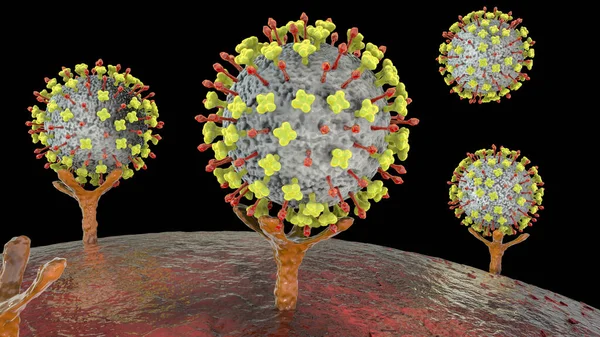In a significant scientific advancement, researchers have successfully developed a novel antibody capable of simultaneously neutralizing two of the world`s most dangerous viruses: Nipah and Hendra. Critically, this new approach also demonstrates the ability to prevent these viruses from mutating to evade the therapy.
The Threat of Henipaviruses
Nipah and Hendra viruses belong to the henipavirus family. They are notorious for causing severe and often fatal inflammation of the lungs and brain in humans. Nipah virus outbreaks regularly occur in South Asia, particularly in Bangladesh and India. Hendra virus is more commonly found in Australia, where it spreads from bats to humans via an intermediate host, typically horses.
Despite the severe threat posed by these pathogens, effective vaccines and approved treatments have remained elusive until now. The high mortality rates and lack of therapeutic options highlight the urgent need for medical interventions.
A Novel Dual-Action Approach
The newly developed therapeutic is a molecule designed with two distinct components. It combines a nanobody known as DS90, which specifically targets and blocks the virus`s fusion protein (essential for the virus to merge with and enter host cells), with the previously identified antibody m102.4, which prevents the virus from attaching to cells in the first place.
This “double-barreled” strategy offers a potent attack. By targeting two different, critical steps in the viral life cycle, the molecule not only achieves enhanced neutralizing power but also significantly reduces the viruses` ability to develop resistance through mutation. The study indicated that the viruses were unable to evolve to bypass this dual blockade, even under pressure.
Promising Results in Animal Studies
The effectiveness of this dual-component molecule was tested in animal models. The results were highly encouraging: the treatment provided complete protection when administered proactively before infection occurred. Even when given after infection had taken hold, it managed to save half of the subjects.
Importantly, the therapy proved effective against both Nipah and Hendra viruses, demonstrating broad applicability across different strains and potential future mutants. This broad-spectrum efficacy against closely related, highly variable pathogens is a particularly valuable attribute.
Looking Ahead
Researchers suggest that this innovative strategy – combining specific nanobodies with established antibodies to create a multi-pronged defense – could serve as a universal model for tackling other highly dangerous and difficult-to-treat viruses. The nanobodies themselves present additional advantages; their compact size and inherent stability make them suitable for rapid production, storage without refrigeration (a critical factor in outbreak regions), and potentially even alternative delivery methods like inhalation.
This breakthrough represents a significant step forward in the fight against Nipah and Hendra, offering a genuine prospect for the development of the first effective therapies for these deadly diseases. The lessons learned from this dual-component approach may also pave the way for new therapeutic strategies against other formidable viral threats.









